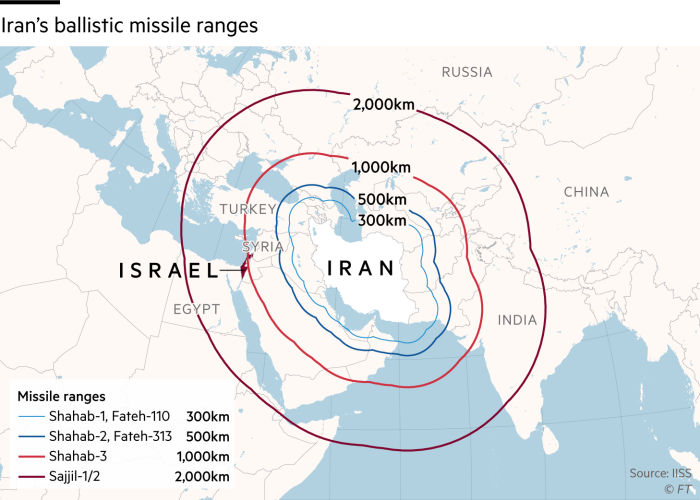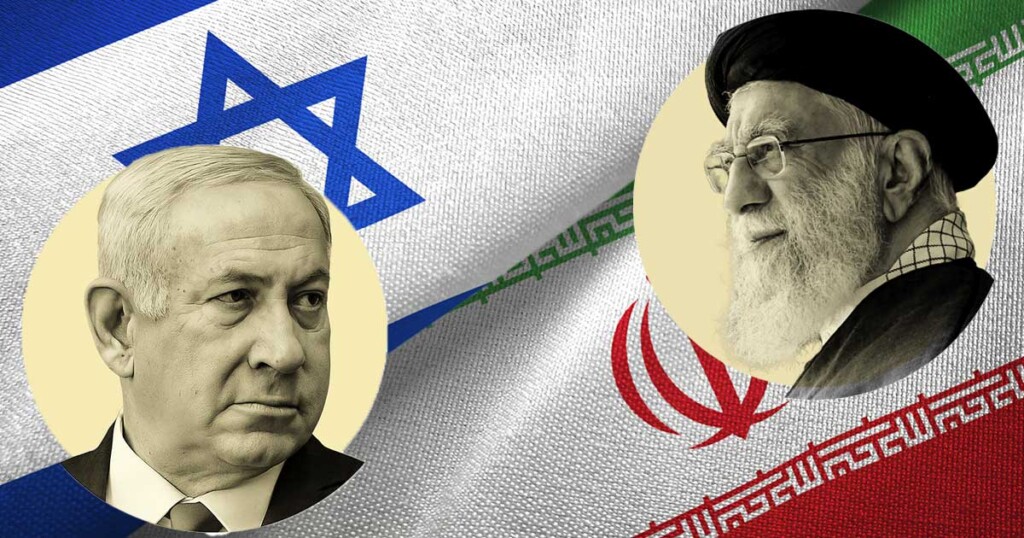The hostilities in the Middle East show no sign of abating, and it is difficult to say whether they will cease at all — each day brings new and deeper spirals of escalation, and where the boundaries of this conflict lie remains anyone’s guess. Meanwhile, even a superficial analysis reveals that events in Iran have already begun to impact the global economy — oil prices are rising despite the absence of direct hostilities in the Persian Gulf, bombings of oil fields, or the closure of the Strait of Hormuz. How will a potential “tanker war” affect Europe and the Balkans? What about the millions of refugees fleeing from war? These are not idle questions. The Iran–Iraq war of the 1980s triggered one of the most significant energy crises in history, while the “Arab Spring,” which brought death and destruction to Syria, Libya, and Iraq, unleashed massive waves of refugees upon Europe. Today, we are obliged to turn our attention to the Middle East — and this obligation is driven by pragmatic considerations.
The difficulty lies in making sense of what is actually happening. Propaganda, military censorship, and media restrictions are hallmarks of any armed conflict — and the clash between Israel and Iran is no exception. We will attempt to bypass these limitations and piece together a reasonably objective picture of the situation from the mosaic of facts currently available to us.
So far, few in Europe truly grasp what a war between Israel and Iran looks like — it is still perceived by journalists and much of the expert community as a “special military operation,” something short-term and relatively minor. This false perception prevents us from fully appreciating the scale of the events and the gravity of their consequences. Therefore, our first task is to understand the nature and dynamics of this war — and that is precisely what this article aims to do.
AIR WARFARE
What draws the greatest interest for an outside observer is the aerial confrontation — a defining and distinguishing feature of the new war in the Middle East. Iran and Israel are separated by 1,500 kilometers and share no common border, meaning the full burden of combat falls on airborne offensive systems: missiles, cruise drones, UAVs, and strike aircraft.
The situation is highly complex. On the one hand, we have seen numerous indications that the Islamic Republic’s air defense system is incapable of fully controlling its own airspace. On the other hand, Israel, despite all efforts, does not possess absolute air superiority either. Israeli military propaganda attempts to suggest otherwise, but if it truly had such dominance, its proclaimed “lightning special operation” would have either concluded within the first 24 hours or would not have resulted in such destructive consequences on Israeli territory itself.
Why is the Jewish state, despite its military superiority, unable to secure a swift and decisive victory? The answer lies in a number of entirely objective technical factors, which we will explore in more detail.
The backbone of Israel’s “long arm” is its manned combat aviation. It would be foolish to doubt its capabilities and firepower — it has repeatedly proven itself in Palestine, Lebanon, Syria, and is now doing so on Iranian soil. However, it has its limitations, which directly affect its ability to overpower the Islamic Republic.
As mentioned earlier, to enter Iranian airspace, Israeli aircraft must travel roughly 1,500 km, passing over Jordan, Syria, and Iraq. This flight takes at least two hours and traverses territory that is far from friendly to Israel.
Iraq, in particular, hosts a wide network of pro-Iranian military groups — they are well-armed, well-organized, and battle-hardened from years of fighting terrorist organizations. According to currently available information, some Iraqi militias have been involved in launching Shahed drones toward Israeli territory. It’s reasonable to assume their involvement in the conflict doesn’t end there — given Iran’s generous supply of portable air defense systems to its allied groups in previous years, it is quite possible that these are being used against Israeli aircraft. While such incidents are unlikely to seriously disrupt operations of the Israeli Air Force (referred to as the Air Corps), even minor threats of this nature place additional strain on the planning and execution of missions.
Furthermore, in the event of an emergency — such as a technical failure requiring ejection — Israeli pilots risk being hunted by Iraqi militias, adding yet another layer of danger to their already complex missions.
In Summary, even the flight itself from Israeli air bases to Iranian targets is far from a simple task.

Another major factor is also directly related to the great distance between Israel and Iran. A combat aircraft is not a massive commercial airliner — it doesn’t carry fuel reserves for long-duration flights. Aerial refueling tankers can partially solve this problem by refueling fighters and bombers mid-flight — but Israel has a very limited fleet of such support aircraft. This significantly constrains the operational capabilities of the Israeli Air Force: they are only able to strike western and partially central regions of Iran, while the eastern parts of the country remain beyond their reach.
What does all this lead to? By the time Israeli aircraft enter Iranian airspace, they have already consumed the portion of fuel needed for high-maneuvering engagements, air patrols, or loitering in search of better targets. There is just enough fuel for a pre-planned strike on previously identified targets — and for the return trip. Meanwhile, Iran relies heavily on mobile missile systems and camouflaged military equipment that is constantly on the move — a situation that demands a continuous Israeli aerial presence over Iranian territory to effectively respond.
Moreover, due to all these technical limitations, Israeli strike aircraft are forced to carry external fuel tanks at the expense of their weapons payload. Simply put, the level and intensity of destruction witnessed in Gaza — which lies just minutes from Israeli airfields — is not achievable in Iran, where the logistical demands are far greater.
Frankly speaking, the intensity of the strikes and the overall capacity of the Israeli Air Force do not match the strategic objectives of defeating Iran through aerial attacks alone.
The recent deployment of American aerial refueling tankers does improve the situation somewhat, allowing Israeli jets to carry more weapons thanks to in-flight refueling options en route to Iran and back.
However, this does not solve the deeper issue: organizing a true “aerial carousel” — a round-the-clock presence of loitering strike aircraft in the skies waiting for targets — remains practically unfeasible. Here, physiological human limitations come into play. A fighter pilot, no matter how well trained, is still human. Constant stress from the threat of air defense attacks drains alertness and concentration. Unlike large commercial aircraft, combat jets do not have crew rotation; there’s no one to take over. Flying a combat aircraft is physically and mentally demanding on its own — and a multi-hour mission (2 hours to Iran, 2 hours back, plus 30 to 60 minutes of combat operations) over hostile territory becomes an exhausting endeavor both physically and psychologically.
THE PICTURE OF WAR
Does Israel hold air superiority over Iran? Undoubtedly, yes. But it is not absolute superiority – it is zonal and temporary in nature. The Israeli Air Force is not capable of launching sustained and intensive strikes across the entirety of Iran simultaneously – it has an advantage in selecting the place and time of attack in a specific zone, where reconnaissance UAVs are deployed in advance, and Iranian air defense systems are pre-identified.
Iran is a very large country. Iran is 2.7 times bigger than Ukraine, the largest country in Europe, and it possesses serious strategic depth. When combined with the limited Israeli air capabilities, this depth allows the Iranian military to maneuver both forces and resources. Israel cannot annihilate, exhaust, or destroy them – it simply does not have the means or capacity.
Moreover, other factors must be taken into account. First, Israel is forced to use the F-35I fighter jets as its main force in the air war against Iran – and only them. Iran’s air defense system is hardly high-tech, but it is numerous – and therefore dangerous. Only the F-35I can safely conduct attacks within Iranian airspace, as they are specifically designed for operations in contested zones, incorporating stealth technology.
This further limits Israel’s real airstrike potential – the F-35I is not the Israeli Air Force’s main workhorse. Furthermore, Israel has no reserve fleet of F-15s or F-16s – those squadrons are conducting combat missions in Gaza, attacking Lebanon (attacks even occurred today), and are also tasked with intercepting hundreds of Shahed drones over Iraq and Syria.
The Shaheds have fallen out of the general narrative (in Syria and Iraq, obviously, there aren’t many bystanders who simultaneously have smartphones and internet access – but some information still reaches us), yet they are actively used in the fighting. Iran employs them specifically as bait, placing an additional burden on the Israeli Air Force and the Iron Dome system. Simply put, they don’t inflict direct damage but serve as a key asset in a war of attrition – and that’s exactly what they were designed for.
Underestimating the capabilities of the Israeli Air Force would be a dangerous and reckless mistake. It is a sizable (300–350 aircraft; the difference is due to secrecy, as Israel is replacing older F-16A/B models without publicizing it), modern, and technologically advanced air fleet – but none of this grants it the “full control of Iranian airspace” that propagandists have claimed as an accomplished goal.
This is a task that cannot be achieved with 300 planes stationed 1,500 kilometers from Iran. As a reminder, to gain air superiority over Iraq, the Coalition amassed 1,800 combat aircraft – and Iraq is three times smaller than Iran.
Only a full-scale (not limited to individual strikes) intervention by the United States could fundamentally shift the situation – an intensification of airstrikes could negatively impact Iran’s ability to wage a war of attrition (limiting its ability to maneuver forces, restore labor mobilization, and other capabilities).
It must be taken into account that the intensity of Israeli air operations, by its very nature, cannot be sustained at a high level over an extended period of time (more than 1–1.5 months). Aircraft, when used intensively, lose operational lifespan and begin to require more thorough maintenance (especially considering that the Israeli Air Force fleet is not particularly large), pilots inevitably grow tired and exhausted, and aviation munitions are expensive, with limited stockpiles. Israel depleted its arsenals during the bombings in Gaza to the point of using unguided bombs dating back to the Korean War, and the reserve for the operation in Iran was supplied by the United States – the Americans delivered weapons to the Israelis throughout the spring, as documented both in the press and by OSINT analysts, but Washington’s stockpiles are also not infinite.
As for missile capabilities comparable to Iran’s, Israel does not possess them – not even in embryonic form.

IS THE WAR DRAGGING ON INDEFINITELY?
It is important to understand that at this moment, neither Iran nor Israel holds a decisive advantage in the air war. Neither side can claim absolute superiority over the other — the situation is essentially a stalemate, and it threatens to plunge the region into large-scale and prolonged hostilities.
Without a full-scale invasion by the United States, the outcome of the confrontation will likely be determined by a war of attrition, similar to what we are currently witnessing in the Russia–Ukraine conflict — a war based on the resilience of systems, the quality of mobilization readiness, the ability to concentrate critical resources, and the capacity to absorb damage without collapsing (provided there is no major third-party intervention).
Iran does not have the ability to defend its airspace from attacks by the Israeli Air Force — but equally, Israel is a vulnerable target for Iranian missile divisions.
The difference in military doctrines matters. Iran finds itself in a military scenario for which it has been preparing over the last 40 years. For all the oddities and flaws of the Iranian regime, it cannot be called naïve — Tehran has long been aware of the true scale of its military capabilities (having the example of Saddam Hussein, and — however sorrowful it may sound — the bombing of Serbia), and fully expected a bloody, difficult war against a technologically superior enemy.
To prepare for this scenario, Iran developed a robust and protected military infrastructure, stockpiled weaponry — not the most high-tech, but practical and effective — built up large militia forces, and fostered in its population a moral readiness for a prolonged war.
Israel, on the other hand, has for decades focused on developing capabilities for blitzkrieg-style warfare — the entire military strategy of the Jewish state is built around large-scale combat operations lasting no longer than a month, and even the campaign against Gaza proved a major strain on its armed forces.
It is clear that the Israeli–Iranian conflict is, with each passing day, evolving into a full-scale war — contrary to the intentions of its initiators — and it is unlikely to be easy or bloodless for the countries involved.
But how costly will yet another prolonged war be for the rest of the world?





